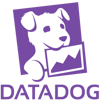Based mostly on our expertise with these options and different customers’ experiences shared in overview platforms, I’ve picked the highest incident response instruments that assist SOCs automate and customise the method of discovering safety breaches. I’ve evaluated every product’s classes, market presence, options, and execs/cons that can assist you make an knowledgeable determination.

SIEM, SOAR

SIEM

SOAR

SOAR

Observability platform

Observability platform

Observability platform

Endpoint safety platform

Incident administration

Incident response
Market presence
| Vendor | Common score | # of staff | Open supply |
|---|---|---|---|
| ManageEngine Log360 | 4.5 based mostly on 22 opinions | 387 | ❌ |
| IBM Safety QRadar SIEM | 4.3 based mostly on 491 opinions | 314,781 | ❌ |
| KnowBe4 PhishER | 4.5 based mostly on opinions 857 | 1,934 | ❌ |
| Tines | 4.8 based mostly on 189 opinions | 344 | ❌ Free version out there. |
| Datadog | 4.4 based mostly on 775 opinions | 7,401 | ❌ |
| Dynatrace | 4.4 based mostly on 1,494 opinions | 5,018 | ❌ |
| IBM Instana | 4.4 based mostly on opinions 761 | 314,781 | ❌ |
| Cynet – All-in-One Cybersecurity Platform | 4.7 based mostly on 154 opinions | 257 | ❌ |
| Splunk On-Name | 4.4 based mostly on opinions 107 | 9,229 | ❌ |
| TheHive | 4.2 based mostly on 17 opinions | 11 | ✅ |
Insights come from customers’ experiences shared in Capterra , Gartner , G2, and TrustRadius.
Function comparability
| Vendor | SIEM | SOAR | UEBA | EDR |
|---|---|---|---|---|
| ManageEngine Log360 | ✅ | ✅ | ✅ | ❌ |
| IBM Safety QRadar SIEM | ✅ | ❌ | ✅ | ❌ |
| KnowBe4 PhishER | ❌ | ❌ | ✅ | ❌ |
| Tines | ❌ | ✅ | ❌ | ❌ |
| Datadog | ✅ | ❌ | ❌ | ❌ |
| Dynatrace | ❌ | ❌ | ✅ | ❌ |
| IBM Instana | ❌ | ❌ | ❌ | ❌ |
| Cynet – All-in-One Cybersecurity Platform | ✅ | ✅ | ✅ | ✅ |
| Splunk On-Name | ❌ | ❌ | ❌ | ❌ |
| TheHive | ❌ | ❌ | ❌ | ❌ |
Distributors with:
- SIEM — safety data and occasion administration acquire and correlate information from community gadgets, endpoints, and logs. For extra: SIEM tools.
- SOAR — safety orchestration, automation, and response present a set of companies and options that make incident response more practical and manageable at scale. For extra: SOAR software.
- UEBA — consumer entity and behavioral analytics make use of machine studying to detect uncommon and probably dangerous consumer and machine exercise. For extra: UEBA tools.
- EDR: Endpoint detection & response can acquire and correlate endpoint exercise to detect, analyze, and reply to safety threats. For extra: EDR tools.
To be categorised as an incident response software program, a software program product ought to:
- Monitor for deviations in an IT community
- Ship alerts of surprising behaviors and malware
- Automate or help customers by the remediation of safety incidents
- Acquire and retailer incident information for reporting and evaluation
See the distinct options and capabilities of one of the best incident response instruments:
ManageEngine Log360
ManageEngine Log360 is an SIEM platform with over 1,000 pre-configured alert standards for a number of safety use cases. With alerts categorised into three severity ranges (Consideration, Bother, and Crucial), you might prioritize and handle the risk accordingly.

Key options:
- Rule-based occasion correlation engine: Log360’s real-time occasion correlation engine permits you to discover assault tendencies by correlating log information from varied sources (750+). The product consists of over 30 predefined correlation standards for detecting frequent cyber assaults, resembling brute-force assaults or ransomware operations.
- UEBA: Log360’s UEBA module creates a baseline of typical conduct and analyzes data from quite a few sources for any variations from anticipated conduct.
- MITRE ATT&CK framework: Log360 can assist your safety staff detect indicators of compromise with:
- Signature-based assault detection.
- Menace visualizer based mostly on MITRE alerts.
- Lateral motion detection for occasion time, ID, supply, and severity.
- Menace intelligence: With Log 360 your SOCs can use risk intelligence for
- Gathering and correlating STIX/TAXII-based risk feeds, resembling Hail A TAXII and AlienVault OTX, or your customized risk feeds.
- Getting real-time alerts when visitors from and to banned IP addresses
- Analyzing information from recognized suppliers like FireEye, Symantec, and Malwarebytes.
- Ticketing device integrations: Jira Service Desk, Zendesk, ServiceNow, ManageEngine ServiceDesk Plus, Kayako, BMC Treatment Service Desk, and extra.
Execs
- ManageEngine integrations: Customers say ADAudit Plus and EventLog Analyzer integrations present in depth details about Energetic Listing adjustments by gathering log information from a number of sources.
- Integration with Home windows: Customers recognize how properly Log360 integrates with the Home windows setting.
- Intensive reporting: Customers discover the device useful for compliance reporting into community actions.
- Customized drag-to-create regex: The answer’s capacity to construct customized drag-to-create regex fields is extremely valued
Cons
- False positives: A standard subject famous is the excessive variety of false positives
- Reporting limitations: There are mentions of reporting capabilities needing enchancment, which some customers assume don’t match rivals like Splunk or LogRhythm.
- Preliminary setup complexity: Whereas implementation is mostly seen positively, some customers discovered the preliminary setup section to be cumbersome,
IBM Safety QRadar SIEM
IBM Safety QRadar SIEM goals to gather and analyze occasion logs from a number of sources, to supply visibility into their IT infrastructures.
IBM QRadar SIEM can ingest occasion log information whereas supporting over 450 machine help modules (DSM) and with greater than 700 supported integrations and associate extensions together with:
Supply: IBM
Execs
- First rate for syslogs: Reviewers say the answer can successfully deal with syslog information and carry out important parsing and rule capabilities.
- Excessive on-premises efficiency: Customers who’ve deployed it on-premises report passable efficiency.
- Scalability: The product is famous for its capacity to scale and deal with complicated environments.
Cons
- Restricted information assortment and evaluation: Some customers say IBM Safety QRadar SIEM’s incident response methodologies are solely appropriate for structured information collected from app/system logging.
- Missing alerts and monitoring: SOC analysts say IBM QRadar SIEM’s central log administration is kind of profitable, however the integration of information and capability to make information actionable is missing Noting that alerting and monitoring don’t have all the options and customization required to be an precise SIEM.
- CLI dependence: Superior options typically require command-line interface utilization
- Excessive prices: The price of scaling might be excessive.
- Restricted integrations and risk intelligence: Some discover QRadar’s integration with risk intelligence missing and never as dependable as different instruments.
- Buyer help: Their help (offshore) might be inefficient.
KnowBe4 PhishER
KnowBe4 PhishER is a web-based platform that permits organizations to monitor and reply to user-reported probably malicious emails. PhishER integrates with third-party evaluation instruments resembling VirusTotal and Syslog.

Key options:
- Determine threats: PhishER gathers and categorizes emails in keeping with standards and tags, then analyzes them to calculate confidence ranges. This assists in detecting tendencies that point out a phishing effort.
- Prioritize emails: PhishER mechanically prioritizes emails based mostly on their time, ID, or severity ranges.
- Block dangerous emails: PhishER’s Blocklist performance allows corporations to assemble a customized checklist of blocklist objects to forestall phishing emails from reaching customers’ inboxes.
- Quarantine threats: PhishER’s International PhishRIP function quarantines detected threats throughout all consumer mailboxes.
Execs
- VirusTotal integration: The combination with VirusTotal is helpful for assessing whether or not an attachment is secure.
- Hyperlink status evaluation: Evaluating hyperlink status is beneficial for figuring out probably dangerous hyperlinks, serving to to forestall phishing assaults.
- Dangerous electronic mail detection: The platform is efficient in figuring out and pulling dangerous emails.
Cons
- Restrictive choice guidelines: The foundations for deleting phishing emails are overly restrictive, requiring a number of standards that make it troublesome to delete emails from a single suspicious handle.
- Inconsistent electronic mail detection: The foundations don’t at all times catch all phishing emails, requiring a number of runs of queries to determine threats. This may result in missed emails.
- Guide remediation: Customers could must manually handle phishing emails generally.
Tines
Tines is an incident response device designed to automate and combine enterprise processes with out coding or scripting. Tines offers instances that enable the staff to collaborate on occasions, investigations, and dealing with anomalies to construct a robust incident response technique.

Examples of incident administration workflows:
- Summarize incident information and undergo a case:
- Format a case template with Markdown syntax (e.g. HTML).
- Summarize what occurred in a case and transfer it to a web page.
- Create a chronology of occasions as a visualization and add it to a case.
- Use Tines to normalize alerts from a number of sources: If the evaluated risk degree is excessive, a Case shall be generated in Tines for monitoring.
Execs
- Ease of use: The drag-and-drop interface is appreciated by customers, simplifying the creation of automated workflows with out in depth coding data.
- Playbooks: Tines’ capacity to develop and debug tales (playbooks) is appreciated.
- Workflow automation capabilities: Tines is highlighted for its efficient automation options throughout safety operations and governance, danger, and compliance (GRC) duties.
Cons
- Want for extra complete scripting: Customers anticipate a extra detailed built-in improvement setting (IDE) for script enhancing, with options like autocomplete and higher error dealing with.
- Documentation gaps: A couple of customers famous documentation is missing, significantly for options associated to the Python scripting toolkit.
- Person interface navigation challenges: Some customers discover the UI troublesome to navigate when creating workflow automation with playbooks.
Datadog
Datadog is a cloud monitoring, safety, and analytics device for builders, IT operations groups, and safety engineers. Datadog is utilized by cloud-native organizations that require visibility into their improvement, and operations environments.
The SaaS platform integrates and automates:
- infrastructure monitoring
- software efficiency monitoring
- log administration
Execs
- Integration choices: The platform offers in depth integrations for cloud companies resembling AWS and Kubernetes.
- Reporting: Reviewers worth the in depth monitoring capabilities, together with artificial assessments, logging, and software efficiency monitoring.
- Person-friendly dashboards: Customers recognize the intuitive dashboard interface.
Cons
- Complexity for brand new customers: A number of reviewers point out that the platform might be overwhelming for newcomers on account of area of interest phrases like APM (software efficiency monitoring) and RUM (actual consumer monitoring).
- Unclear pricing fashions: Some discover the pricing construction unclear, significantly relating to customized metrics. Unpredictable prices related to scaling (e.g., deploying brokers on new hosts) aren’t clearly outlined.
- Gradual updates for brand new options: There are feedback in regards to the sluggish implementation of AWS updates and user-requested options.
- Complicated integrations with key enterprise functions: Customers assume it’s troublesome to combine Datadog with key enterprise functions, even the place documentation and setup can be found.
Dynatrace
Dynatrace is an observability & APM device designed to gather software efficiency metrics and prolong its functionality to watch at an occasion degree. David, its AI device, can analyze information in varied environments, together with the cloud, on-premises, and hybrid.

Key options:
- Utility efficiency monitoring (APM) tracks software efficiency indicators, identifies bottlenecks, and gives code-level insights for Java, .NET, Node.js, and PHP.
- Infrastructure monitoring tracks servers, networks, and different infrastructure elements.
- Actual consumer monitoring (RUM) offers insights into how actual customers interact with their apps.
- Artificial monitoring replicates consumer interactions to make sure software availability and efficiency.
- Cloud monitoring: evaluates the well being of cloud-based IT infrastructures.
Execs
- AI-powered David device: The Davis AI function gives automated root trigger evaluation.
- Preliminary setup: The setup/configuration process is minimal
- Monitoring: The power to view logs and points on clusters is appreciated.
- API improvement: Helpful for API improvement as a result of you may join native information/repos and make the most of ‘Rookout breakpoints’ to debug your API.
Cons
- Ineffective information level monitoring: Customers say Dynatrace has a much less helpful infrastructure than DataDog. The be aware Dynatrace loses information factors and causes variations with Amazon CloudWatch.
- False alerts: Customers often expertise false alerts.
- Excessive value: Customers report that the prices can escalate rapidly, particularly with in depth monitoring wants.
IBM Instana
IBM Instana is an observability platform that allows you to consider and troubleshoot microservices and containerized programs. It helps automated software efficiency monitoring, end-user expertise monitoring, root trigger evaluation, and anomaly detection.
Instana displays 200+ applied sciences, together with cloud and infrastructure, tracing, alerting and notifications, CI/CD, logging, and metrics.
Supply: IBM
Key options:
- Automated discovery and monitoring of:
- Bodily elements: Hosts or machines, containers, clusters
- Logical elements: Providers, endpoints, software views or functions
- Enterprise elements: Enterprise course of (e.g. a “shopping for” hint for capturing information in e-commerce, adopted by an order hint in ER),
- Logging: With logging, Instana collects software and repair logs mechanically and correlates them with metrics, and traces.
- Pipeline suggestions
- Root trigger evaluation: Examine the standard of service problems with your functions together with:
- Points
- Incidents
- Adjustments
Execs
- Root trigger evaluation: Customers recognize the platform’s capacity to carry out in-depth root trigger evaluation, serving to to determine the precise explanation for incidents.
- Excessive-quality buyer help: Customers report optimistic experiences with responsive buyer help.
- Customized filtering: Customers can successfully filter errors and alerts by particular parameters.
Cons
- Studying curve: Whereas many discover it simple to make use of, some customers point out a studying curve exists for these unfamiliar with APM instruments.
- Want for tutorials: A number of customers have prompt that extra tutorials or documentation would assist ease the educational course of for newbies.
- Annual pricing mannequin: Customers have famous that the annual pricing mannequin requires cautious planning for scaling.
Cynet – All-in-One Cybersecurity Platform
The Cynet safety platform is a unified resolution for a number of breach protections. Cynet goals to offer visibility into 4 areas: endpoints, customers, community & information.
The platform combines endpoint safety and EDR/XDR, community analytics, consumer conduct analytics, SOAR, CSPM, and vulnerability administration. The platform additionally gives a free 14-day trial.
As soon as put in, customers can deal with vulnerabilities and compliance points. This consists of:
- OS Updates
- Out-of-date apps
- Validation of safety insurance policies
- Unauthorized apps
- Out-of-date apps
Utilizing quite a few layers, Cynet could block the execution of dangerous processes in runtime.
- Menace intelligence – to realize insights with over 30 reside feeds of Indicators of Compromise.
- Recognized malware – to keep away from malware execution, determine recognized signatures.
- Machine studying – based mostly Subsequent-Era Antivirus (NGAV) – to determine dangerous properties by analyzing information earlier than execution with impartial machine studying.
- Reminiscence entry management – to safe essential reminiscence areas in order that solely official processes can have entry.
- Behavioral evaluation – to find and terminate malicious conduct by monitoring the incident response course of at runtime.

Execs
- Efficient EDR/XDR: Customers spotlight the power of Cynet’s EDR/XDR options, with some saying the EDR is superior to different antivirus merchandise. It offers sturdy behavioral evaluation to detect and stop malware.
- Environment friendly help: Customers say they obtained Fast responses from the CyOps staff.
- SIEM integration: Integrations into current SIEM (Safety Info and Occasion Administration) programs are clean.
- Visibility and risk mitigation: Customers be aware that Cynet offers wonderful visibility into threats for detailed forensic evaluation.
- Broad protection: Cynet is appreciated for providing broad safety, together with ransomware prevention, risk monitoring, and incident response.
Cons
- Excessive useful resource utilization: Some customers report that Cynet can devour important system assets (e.g., “excessive reminiscence utilization), significantly when scanning giant networks.
- Value: The platform is taken into account dearer than some rivals.
- Efficiency points: A couple of customers have skilled slowdowns or efficiency lags. (e.g., “Efficiency slowdowns,” “Slower scans on giant networks”).
- Restricted third-party integration: Whereas Cynet integrates properly with many programs, some customers discover that third-party integrations might be time-consuming or difficult.
Splunk On-Name
Splunk On-Name is an incident administration device with automated scheduling and clever routing capabilities. It expands the alerting and messaging capabilities of all Splunk merchandise. This lets you use your staff’s current contact, organizing, and escalation insurance policies for Splunk alerts.
Splunk On-Name serves as a central level for data movement throughout the incident lifecycle. This helps safety groups resolve occasions sooner, lowering the affect of downtime.

Execs
- Customized API options: Working with the API is intuitive, and it gives quite a few interfaces with default instruments resembling Zendesk.
- Ease of use: Simple to course of tickets in each the cell app and Net web page
- Android cell app: The Android app is appreciated for its usability.
Cons
- On-call calendar: Prospects point out the on-call calendaring is missing, and you may’t make by-hour, or by-day schedules.
- Single sign-on help: Analysts specific that single sign-on (SSO) help might be improved.
- Slack integration: Customers anticipate smoother Slack integration.
TheHive
TheHive is an open-source safety incident administration software program. With TheHive you may synchronize it with a number of Malware Info Sharing Platform (MISP) cases to provoke investigations based mostly on occasions.
It’s also possible to export the outcomes of an investigation as an MISP occasion to help your colleagues in detecting and responding to assaults you’ve encountered. Moreover, when TheHive is used together with different observable evaluation instruments, safety analysts can rapidly study tens, if not a whole lot, of observables.

Execs
- Workflow customization: Reviewers say TheHive’s open-source nature is adaptable to their workflow wants.
- Incident administration: A number of customers appreciated the device’s capacity to customise workflow to remediate safety incidents.
- Integrations: Ease of integration with safety data occasion administration programs (SIEM), and exterior malware data suppliers (MISPs).
Cons
- Cortec integrations: Some customers discovered it difficult to combine TheHive with Cortex.
- Missing KPI dashboards: The product lacks default dashboards to watch the efficiency and execution of the staff.
- Gradual product updates: Customers elevate their considerations about sluggish product updates.
Incident response and OODA Loop
The OODA Loop is a decision-making paradigm divided into 4 phases: statement (O), orientation (O), determination (D), and motion (A). This sequential methodology assists organizations in making efficient incident response selections by biking by these phases.
- Observe: Offers visibility into community visitors, working programs, apps, and different components that may help construct a baseline for the setting and provide real-time occasion information.
- Orient: Contains detailed contextual data and intelligence on current threats and the forms of assaults they’re finishing up.
- Resolve: Refers to each real-time and forensic (after the occasion) details about threats that may help safety groups in making knowledgeable selections on tips on how to reply.
- Act: Consists of actions to take to handle the threats, and scale back their danger and affect on the enterprise.
Easy methods to use OODA Loop in your incident response plan?
Organizations require options that allow automated visibility and management to keep up community resilience. This is applicable to preventative strategies like MFA and granular entry controls (e.g. RBAC), and reactive measures resembling monitoring, and alerting.
A number of instruments can assist with response efforts throughout the OODA cycle. Most instruments are categorised into one of many following classes:
See every step of the OODA loop and the way expertise suits into it:
Observe
This section of the OODA loop necessitates utilizing instruments to ascertain a baseline, outline regular conduct, and determine anomalies. Given what’s concerned, this class features a important variety of instruments:
Orient
The Orient step of the OODA cycle makes use of instruments to offer context and knowledge on the severity of safety occurrences. See the next instruments that may help the orient section:
Resolve
Through the Resolve step, necessary firm selections are taken, resembling whether or not or to not interact in response actions. This step refers again to the earlier two processes – observing and orienting – to make sure groups have all the data they should make knowledgeable selections.
Act
That is the method during which groups use an incident response and safety instruments to implement selections made throughout the “resolve section”. The instruments utilized right here embody the next:
What’s incident response?
Incident response refers to a company’s procedures and applied sciences for figuring out and responding to cyber threats, safety breaches, or cyberattacks. A proper incident response plan permits cybersecurity groups to mitigate or stop harm.
Ideally, a company establishes incident response strategies and expertise in a proper incident response plan (IRP) that outlines how varied cyberattacks must be found and dealt with.
What are safety incidents?
A safety incident, or safety occasion, is any digital or bodily intrusion that compromises the safety, reliability, or accessibility of a company’s data programs or delicate information.
Safety incidents can vary from deliberate cyberattacks by hackers or unauthorized customers to unintentional breaches of IT safety coverage. A few of the most common incidents:
Incident response instruments automate and supply pointers to remediate the method of addressing safety breaches. Corporations use these instruments to watch networks, infrastructure, and endpoints to detect intrusions.
Incident administration instruments can treatment points that develop after attackers have evaded firewalls and different safety programs. They alert SOCs of unauthorized entry to apps and gadgets and detect a number of various kinds of malware.
Incident response programs perform equally to safety data and occasion administration (SIEM) instruments, nevertheless, SIEM merchandise present broader IT visibility and evaluation choices.
Additional studying
Exterior Hyperlinks
Source link
#High #Incident #Response #Instruments #SOCs









![[2512.16904] How Good is Post-Hoc Watermarking With Language Model Rephrasing? [2512.16904] How Good is Post-Hoc Watermarking With Language Model Rephrasing?](https://i0.wp.com/arxiv.org/static/browse/0.3.4/images/arxiv-logo-fb.png?w=150&resize=150,150&ssl=1)